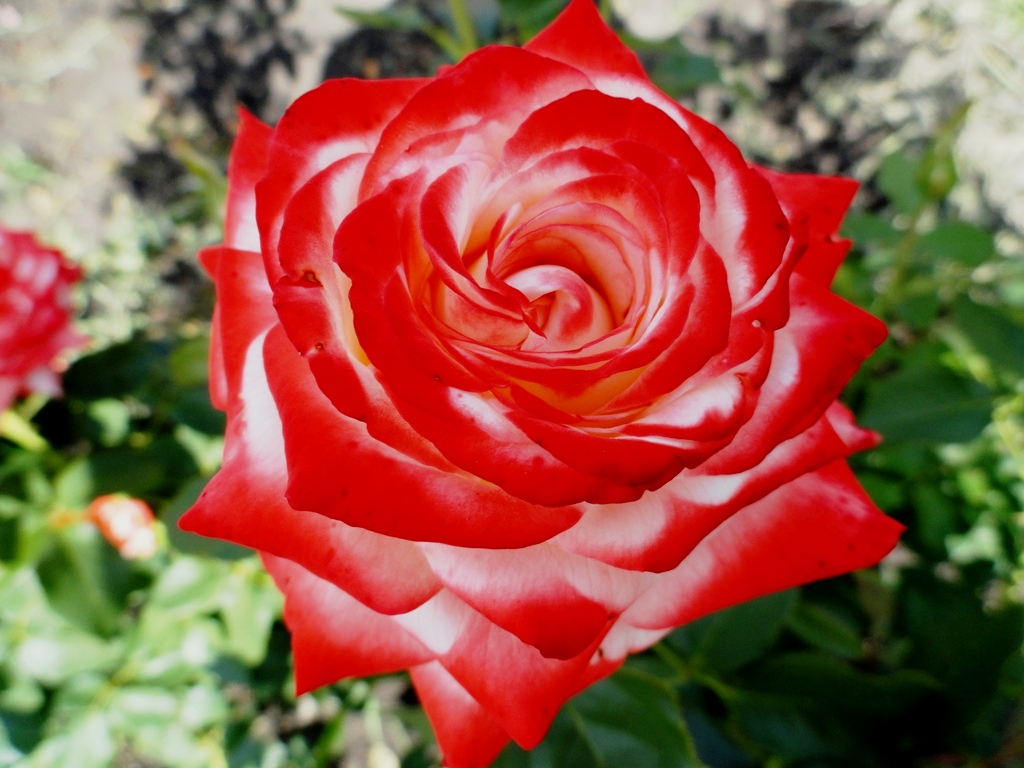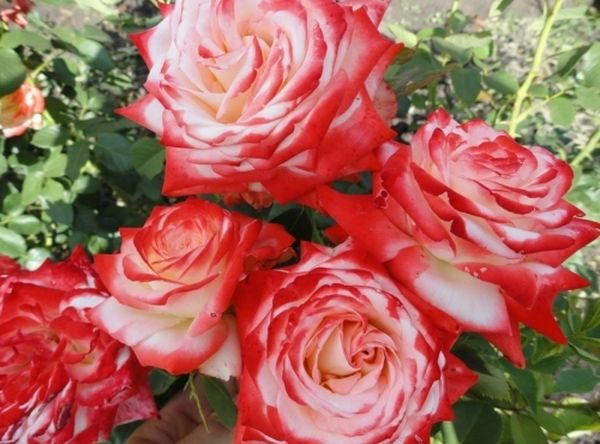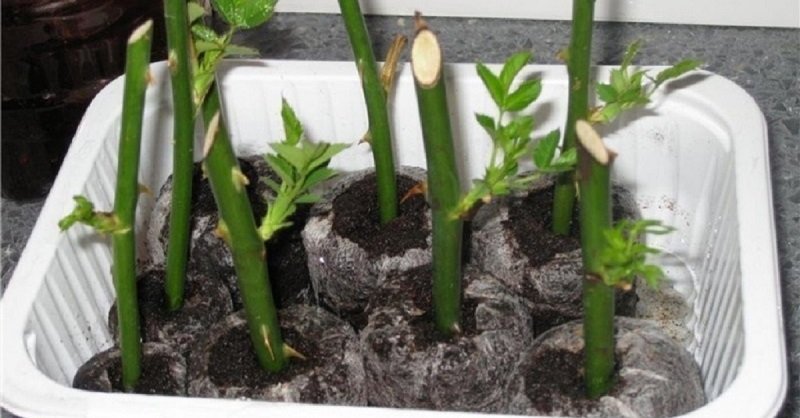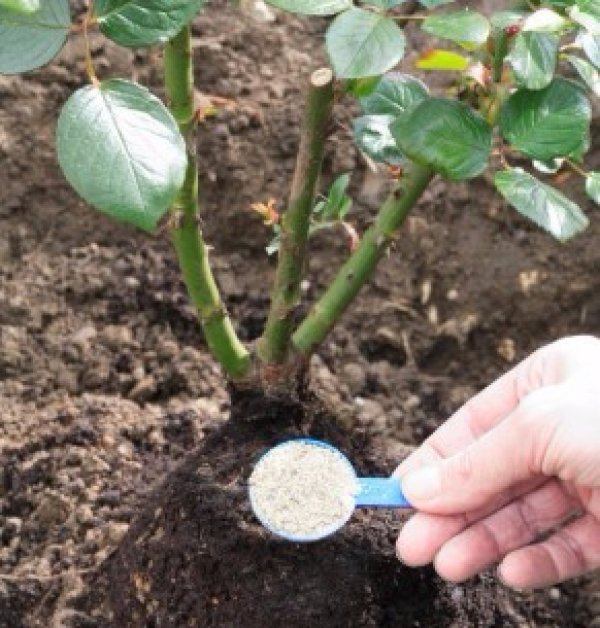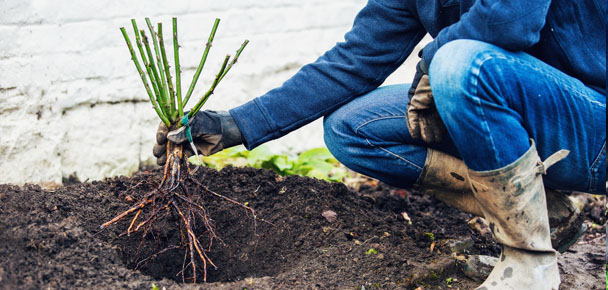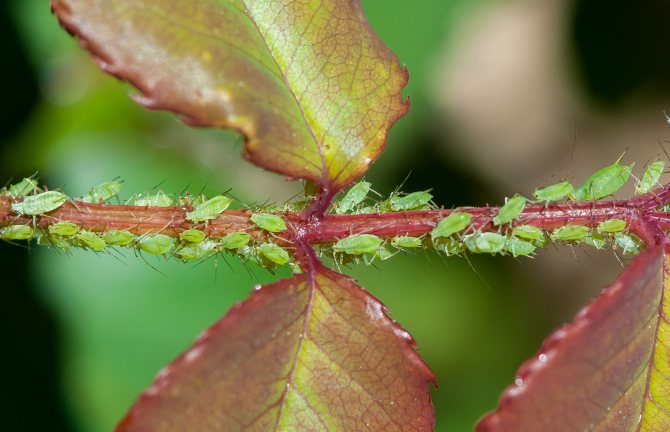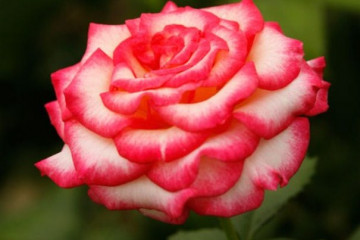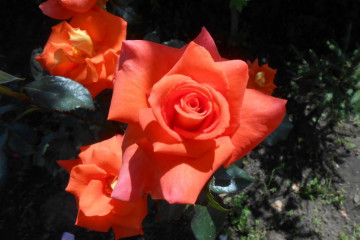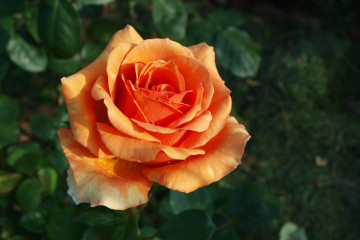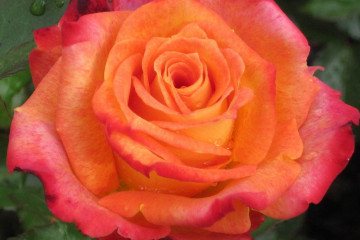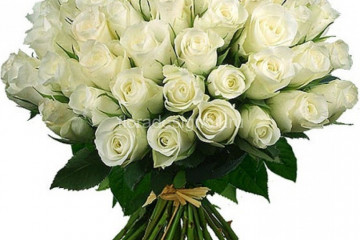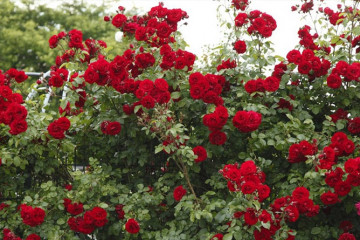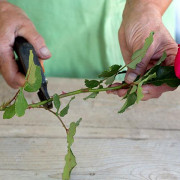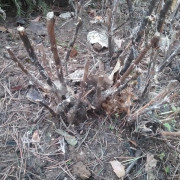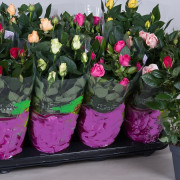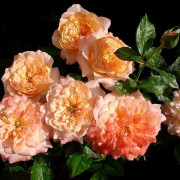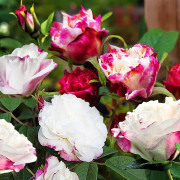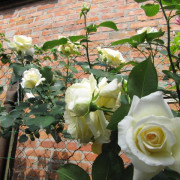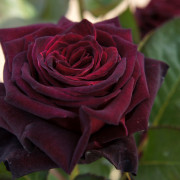Rose Empress Farah (Imperatrice Farah)
Content:
The hybrid tea representatives of the rose family are among the most magnificent: they captivate with the unusual multicolored color of the petals, the buds of a wonderful shape, in addition, they adapt to different climatic conditions. One of the most beautiful among hybrid tea varieties is the Empress Farah rose.
Description of the variety, history of creation
A new variety of hybrid tea roses was bred by the owner of the club of lovers of these flowers, Georges Delbar, back in 1973 and presented to the only Iranian empress, Farah Pahlavi. The breeder's son, Henri Delbar, was so fascinated by this wonderful woman that he suggested that the roses be named after the shahini who had invested so much in the development of the culture of her country.
Officially, the Empress Farah hybrid rose variety was designed by the selection company Delbard in the early 90s of the last century. The presentation took place at the Orleans Flower Show in 1995. Since then, roses, as gorgeous and elegant as the great woman who gave them her name, have enjoyed unwavering popularity among flower lovers.
Brief description, characteristic
Rose Princess Farah, as it is also called, has a very interesting goblet flower shape with elongated completely snow-white petals in the center.
The rest of the inflorescence forms crimson-purple densely packed tiers, elegantly bending back. Moreover, their intensity and shade varies depending on the illumination (from coral to bright red).
- Rose bushes of this variety are erect, they grow well, reaching a height of 1.5-2.0 meters with an extension to the tops.
- There are many shoots, each of them ends with a bud.
- In the stage of full disclosure, each rose reaches 13 centimeters in diameter.
- The thorns are sharp, have a wide base, and are light brown in color.
- The leaves are light green in color, leathery to the touch, glossy shiny. Their light tone perfectly matches the delicate color of the petals.
The delicate aroma has pronounced sweet-pear notes, which are so popular with flower lovers.
Advantages and disadvantages of the variety
Rose Queen Farah has many varietal advantages:
- resistance to low temperatures;
- disease resistance;
- easily cut off;
- blooms magnificently and for a long time;
- the petals in the inflorescence remain tightly pressed against each other throughout the entire flowering period;
- unpretentiousness to growing conditions.
Some may find flaws in this wonderful flower:
- the bush is rather thorny, which makes it a little difficult to care for it;
- constant feeding is required for abundant flowering;
- in the absence of pruning, the number of buds is minimal;
- shoots are long enough and "naughty";
- the smell of the flower is very delicate, but rather weak;
- in some regions, the plant can go out of dormancy for a long time.
Use in landscape design
Due to its excellent external data, Farah rose perfectly serves for ennobling garden plots in the form of single "islets". Bushes can be planted, alternating different shades of petals, then you get a wonderful ornament.
Landing in open ground
For the successful engraftment of flower queens on the site, it is necessary to provide for all the important points: planting time, choosing a place for a flower bed, preparing the soil.
Roses are grown from seeds, stem cuttings, plots from a whole bush, root cuttings.
The easiest and most reliable way to grow young bushes from cuttings.
What time to plant
Florists recommend carrying out this operation in the second decade of April, if by that time the outside air is warm enough. If the frosts ended even earlier and do not return anymore, you can start planting.
Location selection
Hybrid tea varieties are very photophilous, so the future flower garden should be well lit by the sun, and also sufficiently ventilated.
How to prepare the soil and flower for planting
Roses are not very picky about soils - any, except too heavy or light ones, are suitable for them. Loams, slightly dry, with an acidic Ph level are best suited for these beauties.
To prepare for planting, the soil must be dug up and a mixture of fertilizers applied:
- humus (compost) in a proportion of 10-20 kg per 1 square meter;
- 200 gr. ash;
- 400 gr. lime;
- 2 tablespoons of superphosphate mixture.
It is advisable to complete the preparatory procedures at least a month before planting the seedlings, preferably even in the fall.
The planting hole is dug to a depth of 0.5-0.6 m, at the bottom of which a mound of soil and humus with compost is formed.
Landing procedure
Before planting, the damaged areas on the roots of the seedlings are cut off, slightly shortened and treated with a growth stimulant. You should also leave only a couple of buds on the shoots.
The seedling is placed in a prepared planting hole, the roots are carefully distributed over its entire surface and covered with soil, which is slightly compacted from the outside. After that, the future bush should be watered and mulched with peat.
Plant care
This rose variety is very unpretentious, so caring for it consists in regular watering and feeding.
Watering rules and humidity
The soil under the bush must be moistened to the very tips of the roots (up to 0.5 m). Watering is carried out a couple of three times a week at the rate of one bucket per one bush.
During periods of drought, the amount of moisture increases to 2 buckets, and during the rainy season it decreases.
Top dressing and soil quality
In the second year after planting, young roses must be fed, alternating minerals with organic matter. During the pasture of the buds, the Empress Farah hybrid tea can be "treated" with potassium salts.
The introduction of mineral mixtures is permissible only after abundant watering.
Pruning and replanting
The main work on pruning and shaping the rose bush is carried out in the spring, and after winter all damaged shoots are removed, and only 2-3 large buds are left on healthy ones.
Autumn pruning involves getting rid of all foliage and dried flowers. The transplant is also carried out in the fall, upon completion of active sap flow.
Wintering features
Preparation for wintering a rose bush consists in hilling at a height of 30-40 cm. It is not necessary to cover them, because they are frost-resistant.
Bloom
The buds on a rose of this variety bloom in two waves from early summer to the second decade of October. Flowering is characterized by splendor and rich color tints.
A period of activity and rest
At rest with slow sap flow, roses are found from the end of October to the end of the first decade of spring. The activity is observed in the summer months, starting from the end of May - then the Empress Farah blooms especially magnificently.
Care during and after flowering
During the setting of buds and flowering, watering and the introduction of phosphorus are necessary. Lack of moisture during this period can cause premature leaf fall and poor flowering.
After the flowers dry up (late summer), fertilizers are stopped so as not to provoke the growth of new shoots and the plant is fed with potash mixtures for better wintering.
What to do if it does not bloom
A bad color of a rose can give with a lack of soil moisture or with a deficiency of minerals in it. The problem can be solved by regular complex feeding of potassium and phosphorus, as well as increased watering.
Flower propagation
Reproduction is best done by cuttings. For manipulation, shoots are selected from the central part of the stem (about 8 cm in length) with unopened buds.
When is it produced
It is best to breed beautiful roses in the middle of spring in the morning.
Detailed description
To obtain a perfect cutting, you need to make an even cut at the top with a sharp knife, and beveled at an angle at the bottom. Cuttings are placed in water with a growth stimulant for a couple of weeks, while the container is placed in the shade. Once the roots have enough branch, the plant is ready to be planted outdoors.
At first, the seedlings are covered with cans and are moistened daily.
Diseases, pests and ways to control them
In the description of this variety of roses, it is said about their resistance to diseases and pests, including even powdery mildew or black spot they are not afraid of. Occasionally, however, Empress Farah is struck by rust or attacked by aphids.
Rust is removed by cutting off damaged parts of the flower, and aphids and other pests can be washed off with a stream of water, and also sprayed with soapy water or other insecticide.
Named after the wife of the Iranian emperor, Farah Pahlavi, the rose is just as elegant and gorgeous. This is one of the most wonderful hybrid tea varieties of roses that are very popular with flower growers for their beauty and ease of care.
